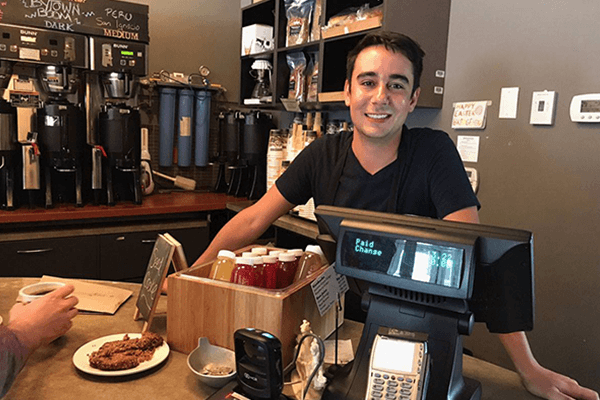Bridgehead is still selling their decadent desserts after posting their nutritional information through MenuSano.
Having grown from Two United Church Ministers and two social activists concerned about small-scale coffee farmers in Nicaragua to having over 20 locations, Bridgehead has successfully given their customers what they want – and has kept them wanting more.
As the second fair trade coffeehouse in Canada, and first in Ottawa, Bridgehead prides themselves on their organic (and of course fair trade), roasted coffee. “Being able to roast our own coffee here adds a lot of value to what we do, and has become important to us,” says Kevin Harbison, Bridgehead’s Customer and Community Representative.
But what do consumers really look for when they go to Bridgehead? And why do they keep coming back?
Read more: How To Market your Healthy Dishes with Social Media
“Fairtrade has been a big differentiator for us, but our commitment to environmental sustainability is also a big draw,” explains Harbison. “The way in which organic coffee is grown, utilizing shade, is something we and many of our customers believe is significantly more sustainable and important to foster.”
“We try to cater to a wide base of health conscious consumers, but health consciousness takes several forms. We make most of our food in our own kitchen, and buy local and organic whenever it makes sense and is possible. We try our best to provide our consumers with low-calorie, vegan, non-dairy, and made-without-gluten options in different categories.”
Read more: Sustainability within the Foodservice, Hospitality, and Events Industry
In order to provide nutritional information and to keep up with Ontario’s new regulations as of January, Bridgehead was obligated to find a reliable way to calculate its recipes.
“Now that we have 20+ locations, we are required to provide nutritional information, but our guests have continually requested it before and we were proud to have the answers. Having to post nutritional information was more a matter of re-designing and clearly communicating this information on our labels and signage,” says Harbison.
For some companies, posting information for their customers to see effects different menu item’s popularity.
“We noticed significant change in a few items minimal change in others, it surely depends on the type of food. People’s decisions with regard to nutrition labeling seem to be changing when they’re offered a range.”
Harbison points out that, “One of our more indulgent desserts, the carrot cake, is still going well and hasn’t seen much of a change since it’s been labelled. But, when it comes to things like muffins where there is a range of options presented, we’re seeing people pick more low-calorie/vegan options instead of muffins made with buttermilk and eggs.”
Read more: Bitesize: The Growth of Takeouts and Meal Kits
It’s not only the calorie count keeping consumers interested.
“The calorie count definitely seems to be of primary importance for many guests, but of course we have many who have specific concerns about sodium, saturated fat, fiber, etc,” says Harbison”
To present their consumers with reliable nutritional information, Bridgehead uses MenuSano.
“The main factors for using MenuSano have been recipe accuracy and the ability to instantly check potential variations in the recipe. It’s convenient if we notice one item in development might be slightly higher in calories, salt, or other factors than we would like. Since we’re often making food and ingredients for that item from scratch, being able to specify custom ingredients in MenuSano has let us provide much more accurate information in items than we would otherwise.”
Bridgehead has opened a number of new shops recently and is excited to start the planned renovations they have on their older stores. Focusing on improving customer’s experiences is always number one.
Read more: Bitesize: Creating a CFIA compliant Nutrition Fact Label



















